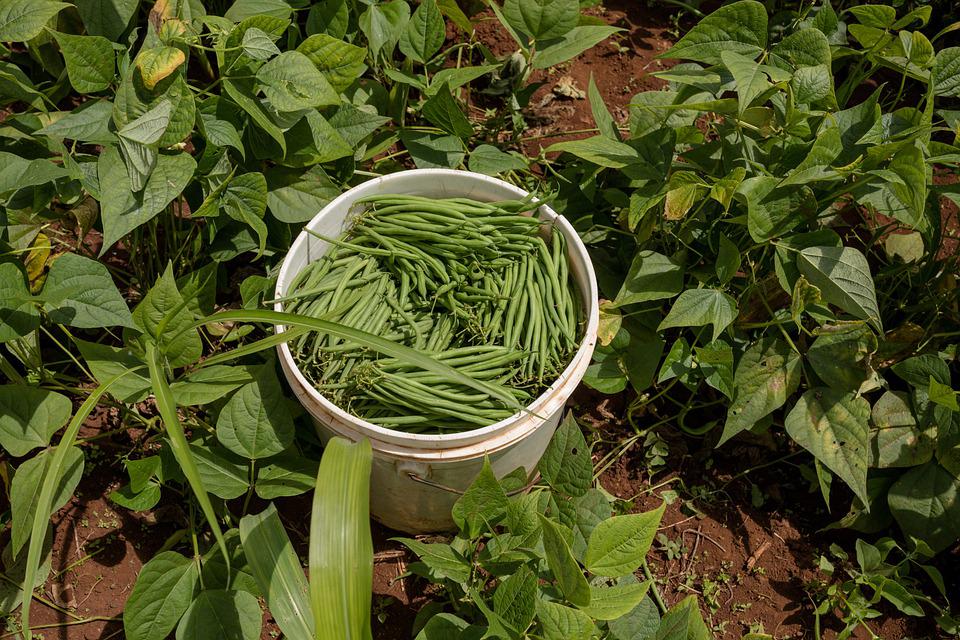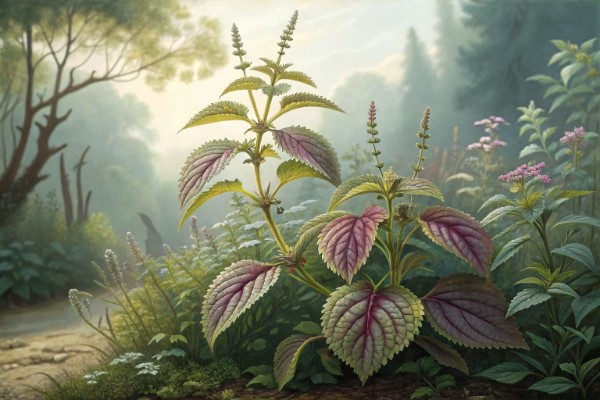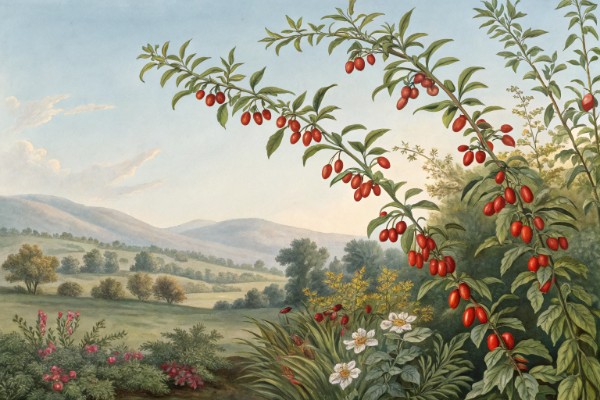Growing Green Beans: How to Plant, Care, and Harvest Easily

Growing Green Beans
Growing green beans rewards gardeners with tasty pods, healthy soil, and quick results. Sow seeds directly outdoors once frost danger passes and soil temperatures hit roughly 60°F (16°C). Choose sunny spots, space seeds carefully, and water consistently—your beans will thrive. Read on to discover tips that'll keep your harvest coming all season long.
Growing Green Beans: Plant, Care, and Harvest With Confidence
I grow Growing Green Beans for speed, flavor, and the way they reset tired soil with their quiet nitrogen magic. Pods go from edible to shoe leather fast, so timing and rhythm matter.
Pick Your Type: Bush vs. Pole
Bush beans fruit fast in one big flush, usually 50 to 60 days, and sit well in small beds or fabric grow bags. Pole beans climb 6 to 8 feet (1.8 to 2.4 m), take 60 to 70 days, then feed you for weeks.
I plant both, using bush for early volume and pole for steady meals. My go-to mix: ‘Provider’ for cold springs, ‘Blue Lake’ for consistency, and ‘Fortex’ for those long, tender pods that never taste starchy.
Timing and Temperature
Beans hate cold soil, and they sulk if you rush them. Sow once soil holds 60 F (16 C) at 2 inches (5 cm) deep, and air sits reliably above 65 F (18 C).
I wait one extra week after the last frost date, because cold snaps stunt roots. Warm beds with black mulch if spring drags.
Snap beans like soil above 60 F (16 C) and need about 1 inch (25 mm) of water per week for steady yields. Source: University of Minnesota Extension and USDA recommendations.
Soil and Bed Prep
Target pH 6.2 to 6.8, loose texture, and strong drainage. Beans despise soggy feet, high salts, and fresh manure.
Work in compost lightly, then add a low-nitrogen starter such as 5-10-10 at 0.5 pound per 100 square feet (250 g per 9 m²). Skip heavy nitrogen, or the plants grow leaves and forget pods.
Inoculant: Cheap Insurance
Dust seed with a Rhizobium inoculant for Phaseolus if your bed has never seen beans. That microbe forms nodules that fix atmospheric nitrogen, which trims fertilizer needs.
If I skip inoculant in new soil, I see pale plants and fewer pods. With it, foliage stays greener without feeding.
Sowing and Spacing
Plant seeds 1 inch (2.5 cm) deep in warm soil. Space bush beans 2 to 3 inches (5 to 7.5 cm) apart in rows 18 to 24 inches (45 to 60 cm), and thin for airflow.
For pole beans, set seeds 4 inches (10 cm) apart at the base of a trellis, with rows 24 to 36 inches (60 to 90 cm). I sow two successions two weeks apart for insurance.
Trellising That Never Fails
A-frame netting or cattle panel arches save time and backs. I clip stems lightly until they wrap the mesh on their own.
Give 6 to 8 feet (1.8 to 2.4 m) of climb and firmly anchor the ends. Wind plus a heavy set will test your rigging.
Watering and Feeding
Deliver 1 inch (25 mm) of water weekly, split into two drinks in heat. Water at soil level in the morning to keep leaves dry and reduce disease.
I mulch with straw at 2 inches (5 cm) thick once seedlings hit 4 inches (10 cm). If leaves pale midseason, sidedress with a light organic 5-5-5 at flowering.
Heat, Bloom Drop, and Productivity
Flowers can drop in sustained heat above 90 F (32 C). Shade cloth at 30 percent and steady moisture keep pods coming.
Pick often so plants keep setting. Skip two days, and those pods go woody in a blink.
Interplanting and Succession
I tuck scallions, dill, or baby lettuce between rows to use space before the canopy closes. Succession every 2 to 3 weeks until midsummer keeps the harvest rolling.
For fall, sow 8 to 10 weeks before first frost, then use row cover on cold nights. The sweetest pods I grow often come from cool September mornings.
Pests, Diseases, and Clean Culture
Scout for Mexican bean beetle, aphids, and spider mites weekly. Yellow eggs on leaf undersides signal bean beetles, so I squash early or cover plants with row cover until bloom.
For mites in heat, I spray hard water jets every other morning, then follow with insecticidal soap. Predators show up fast if I avoid broad-spectrum sprays.
Diseases to watch: rust, anthracnose, bacterial brown spot, and mosaic viruses. Rotate 3 years out of legumes, space plants for airflow, and never work wet foliage.
I buy disease-resistant seed from reputable suppliers and start with clean tools. Seed can carry pathogens, so I avoid saving seed from infected plants.
Harvest and Storage
Pick pods when they feel crisp, full, and still slender, about pencil thick. I harvest every 2 to 3 days in the morning and use two hands to protect vines.
Refrigerate unwashed beans in a breathable bag for up to a week. For longer storage, blanch 3 minutes, chill, drain, then freeze in flat packs.
Top Varieties I Trust
- Provider (bush): cold soil tolerance, early, sets even in spring mood swings.
- Blue Lake 274 (bush): classic flavor, straight pods, reliable germination.
- Jade (bush): stays tender at longer length, handles heat.
- Dragon Tongue (bush): creamy texture, purple streaks that fade when cooked.
- Fortex (pole): long filet style, tender even past 9 inches (23 cm).
- Rattlesnake (pole): handles heat and drought, great for arbors.
- Kentucky Wonder (pole): vigorous climber, rich old-school flavor.
Gear That Actually Helps
- Rhizobium inoculant for Phaseolus seed in new beds.
- 30 percent shade cloth and clips for heat waves.
- Drip line with 0.5 gph emitters at 12 inches (30 cm) spacing for even moisture.
- Soft plant ties or reusable clips for trellises.
- Lightweight row cover to foil beetles early on.
- Stainless harvest snips and vented produce bags.
Soil Science, Fast and Friendly
Beans fix nitrogen with rhizobia, yet snap beans still benefit from modest fertility because harvested pods export nutrients. Keep electrical conductivity low and avoid high-salt fertilizers that burn roots.
If your soil binds like potter’s clay, broadfork or rake in coarse compost to break pans before planting. Roots need air as much as water.
Troubleshooting
- Yellow leaves: cold soil, overwatering, or low nitrogen. Warm the bed and sidedress lightly once flowering starts.
- Hollow or lumpy pods: irregular watering or missed picks. Keep moisture steady and harvest earlier.
- Chewed leaves, lacework pattern: Mexican bean beetle larvae. Hand-crush egg clusters, use row cover early, and consider neem on young larvae.
- Brown streaks on pods: anthracnose. Remove infected plants, rotate, and buy clean seed.
- Flowers dropping: heat stress or excess nitrogen. Add shade cloth, water deeply, and ease up on feeding.
Seed Saving Notes
Beans self-pollinate, so varieties stay true with modest isolation, about 20 feet (6 m) if you want clean lines. Save only from fully dry pods on healthy plants, then freeze seed for a week to stop weevils.
Skip saving seed from hybrids unless you like surprises. I dry seed on screens, then store cool and dark with silica gel.
Anecdotes From Rows That Worked
I’ve planted into 55 F (13 C) soil and watched beans sit like sullen teenagers for two weeks. I resowed into 68 F (20 C) soil and they leapt up in six days, then outran the weeds.
One summer, a heat dome roasted blooms until I hung shade cloth over the row like a sail. Two days later, new flowers set and the harvest recovered.
Nutritional Side Note
Green beans bring fiber, vitamin C, and carotenoids with very few calories. Young pods taste best lightly cooked, or raw if tender and seed still small.
Credible Sources I Lean On
- University of Minnesota Extension: planting timing, soil temperature, and water needs for snap beans.
- Cornell Cooperative Extension: spacing, disease prevention, and rotation guidance.
- USDA and SARE: nitrogen fixation in legumes, inoculant use, and soil health practices.
- University of Maryland Extension: Mexican bean beetle identification and control.
- Royal Horticultural Society: bean cultivation basics, pH, and harvest practices.
Bush beans often reach harvest in 50 to 60 days, while pole beans take 60 to 70 days and produce over a longer window. Compilation from seed trials and extension publications.
Quick Start Checklist
- Warm soil to 60 F (16 C) or higher, then sow 1 inch (2.5 cm) deep.
- Space plants for airflow, mulch once seedlings reach 4 inches (10 cm).
- Water 1 inch (25 mm) weekly, morning, at soil level.
- Trellis poles to 6 to 8 feet (1.8 to 2.4 m) and train early.
- Pick every 2 to 3 days at pencil thickness to keep vines producing.
Cheatsheet: Fast-Track Green Bean Success
🌱 Best Varieties
- Bush beans: Quick, compact, 50-60 days.
- Pole beans: High yield, needs trellis, 60-70 days.
- Both high fiber, protein, iron.
🔧 Tools and Products You'll Need
- Hoe or hand trowel
- Watering can or hose
- Trellis/netting (for pole beans)
- Mulch (straw or compost)
- Gloves
- Green bean seeds (bush or pole type)
- Compost or well-rotted manure
- Garden soil (loamy, well-draining)
🌤️ Planting
- Soil temp: Wait for soil to warm to 60°F/16°C.
- Plant after frost risk passes.
- Sow seeds 1 in/2.5 cm deep, 3 in/8 cm apart.
- Rows: 18-24 in/45-60 cm apart.
- For pole beans: Erect trellis before sowing.
💧 Care & Feeding
- Water: 1 in/2.5 cm per week, keep moist but not soggy.
- Mulch to retain moisture & suppress weeds.
- Fertilize lightly; excess nitrogen = leaf, not pod.
- Pick bugs (aphids, beetles) by hand.
🌿 Health & Nutrition
- High in: Vitamin K, C, fiber, antioxidants.
- Low calorie, supports heart health & digestion.
- Good for self-sufficiency; 10 plants/person for steady supply.
✂️ Harvesting
- Ready in: 50-70 days after sowing.
- Pick pods when firm, 4-6 in/10-15 cm long, before seeds bulge.
- Harvest every 2-3 days to boost more pods.
- Use scissors or gentle hands to avoid harming plants.
🥫 Storing
- Refrigerate fresh beans: Up to 1 week.
- Freeze, can, or pickle surplus for year-round use.
Frequently Asked Questions About Growing Green Beans
When is the ideal planting time for green beans?
Green beans thrive best after all risk of frost passes and the soil has warmed. Aim to plant when soil temperatures reach at least 60°F (16°C), typically late spring through early summer.
What type of soil supports healthy green bean growth?
Choose a fertile and well-drained soil enriched with organic matter. Maintain a soil pH between 6.0 to 6.8 for vigorous bean production.
How deep should green bean seeds be planted?
Sow seeds about 1 inch (2.5 cm) deep in loosened soil, spacing them roughly 3 inches (7.5 cm) apart for bush varieties, or 6 inches (15 cm) apart for pole beans.
Do green beans require direct sunlight?
Yes, green beans produce best when planted in a location receiving 6 to 8 hours of direct sunlight daily. Full sun encourages abundant blossoms and healthy pods.
Should green beans be watered frequently?
Green beans prefer consistent moisture, especially during flowering and pod formation stages. Water deeply once or twice per week to supply approximately 1 inch (2.5 cm) of water per week, adjusting for rainfall.
What is the recommended spacing between rows?
Position rows of bush beans approximately 18 to 24 inches (45 to 60 cm) apart. Pole beans benefit from wider spacing, about 30 to 36 inches (75 to 90 cm) apart, to accommodate supports and promote airflow.
How do you know when green beans are ready for harvest?
Harvest green beans while pods appear young and tender, typically 4 to 6 inches (10 to 15 cm) in length. Regular harvesting promotes continuous production throughout the season.
Are support structures necessary for all green bean varieties?
Support structures such as trellises or poles are essential for pole bean types to encourage vertical growth and easy harvesting. Bush beans grow compactly and require no additional support.
Growing Green Beans rewards you with more than just a bumper crop—it’s a lesson in patience and timing. Start with warm soil, give your plants steady water, and don’t skip the support for pole varieties. Watch for pests but don’t overthink it; beans are tougher than they look. Pick them young for the sweetest bite, and don’t be shy about repeat harvests—they’ll keep coming. In the end, a patch of green beans can feed you, teach you, and remind you why we dig in the dirt. If you’re hooked on beans, try growing azuki beans or bean sprouts next—variety keeps the garden interesting.



